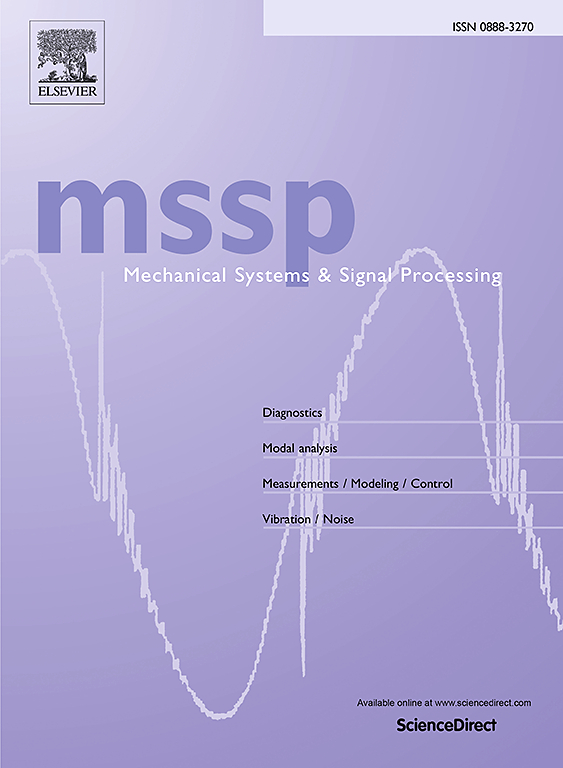Physics informed Long Short-Term Memory neural network for dual state-parameter estimation of linear dynamical systems robust to input forces
IF 8.9
1区 工程技术
Q1 ENGINEERING, MECHANICAL
引用次数: 0
Abstract
Structural Health Monitoring (SHM) of structures is significantly challenged by the presence of unknown input forces, e.g, external unmeasured and non-stationary excitations applied to the system such as wind or loads, which hinder accurate damage assessment and system identification. Traditional model-based approaches face inherent limitations related to model inversion, observability, and identifiability, all of which are impaired by the need for input force knowledge. Data-driven methods offer advantages in terms of scalability and automation but still depend on known inputs and often lack physical interpretability. To address these issues, an input-robust Physics-Informed Long Short-Term Memory (rPi-LSTM) framework is introduced, integrating input-robust physical modeling of system dynamics with the temporal learning capabilities of LSTM networks. The framework employs an output injection strategy to reject unknown input forces, enabling estimation of system states and spatial health parameters without requiring input force information. By preserving temporal dependencies with the LSTM network, an aspect that is often neglected in conventional physics-informed networks, the method ensures stable and accurate system estimation while complying with the system physics. Validation through numerical simulations and real laboratory-scale experiments confirms its robustness to input forces, noise, data sparsity, and varying damage scenarios, demonstrating strong potential for real-world SHM applications under uncertain conditions.
基于物理信息的长短期记忆神经网络用于对输入力具有鲁棒性的线性动力系统的双状态参数估计
结构健康监测(SHM)受到未知输入力存在的极大挑战,例如,施加于系统的外部未测量和非平稳激励,如风或荷载,这些激励阻碍了准确的损伤评估和系统识别。传统的基于模型的方法在模型反演、可观测性和可识别性方面存在固有的局限性,所有这些都受到输入力知识的需要的影响。数据驱动的方法在可伸缩性和自动化方面具有优势,但仍然依赖于已知的输入,并且通常缺乏物理可解释性。为了解决这些问题,引入了输入鲁棒的物理通知长短期记忆(rPi-LSTM)框架,将输入鲁棒的系统动力学物理建模与LSTM网络的时间学习能力相结合。该框架采用输出注入策略来拒绝未知的输入力,从而在不需要输入力信息的情况下估计系统状态和空间健康参数。通过保留与LSTM网络的时间依赖性(这是传统物理信息网络中经常被忽视的一个方面),该方法确保了稳定和准确的系统估计,同时符合系统物理。通过数值模拟和真实的实验室规模实验验证了其对输入力、噪声、数据稀疏性和不同损伤场景的鲁棒性,展示了在不确定条件下实际SHM应用的强大潜力。
本文章由计算机程序翻译,如有差异,请以英文原文为准。
求助全文
约1分钟内获得全文
求助全文
来源期刊

Mechanical Systems and Signal Processing
工程技术-工程:机械
CiteScore
14.80
自引率
13.10%
发文量
1183
审稿时长
5.4 months
期刊介绍:
Journal Name: Mechanical Systems and Signal Processing (MSSP)
Interdisciplinary Focus:
Mechanical, Aerospace, and Civil Engineering
Purpose:Reporting scientific advancements of the highest quality
Arising from new techniques in sensing, instrumentation, signal processing, modelling, and control of dynamic systems
 求助内容:
求助内容: 应助结果提醒方式:
应助结果提醒方式:


